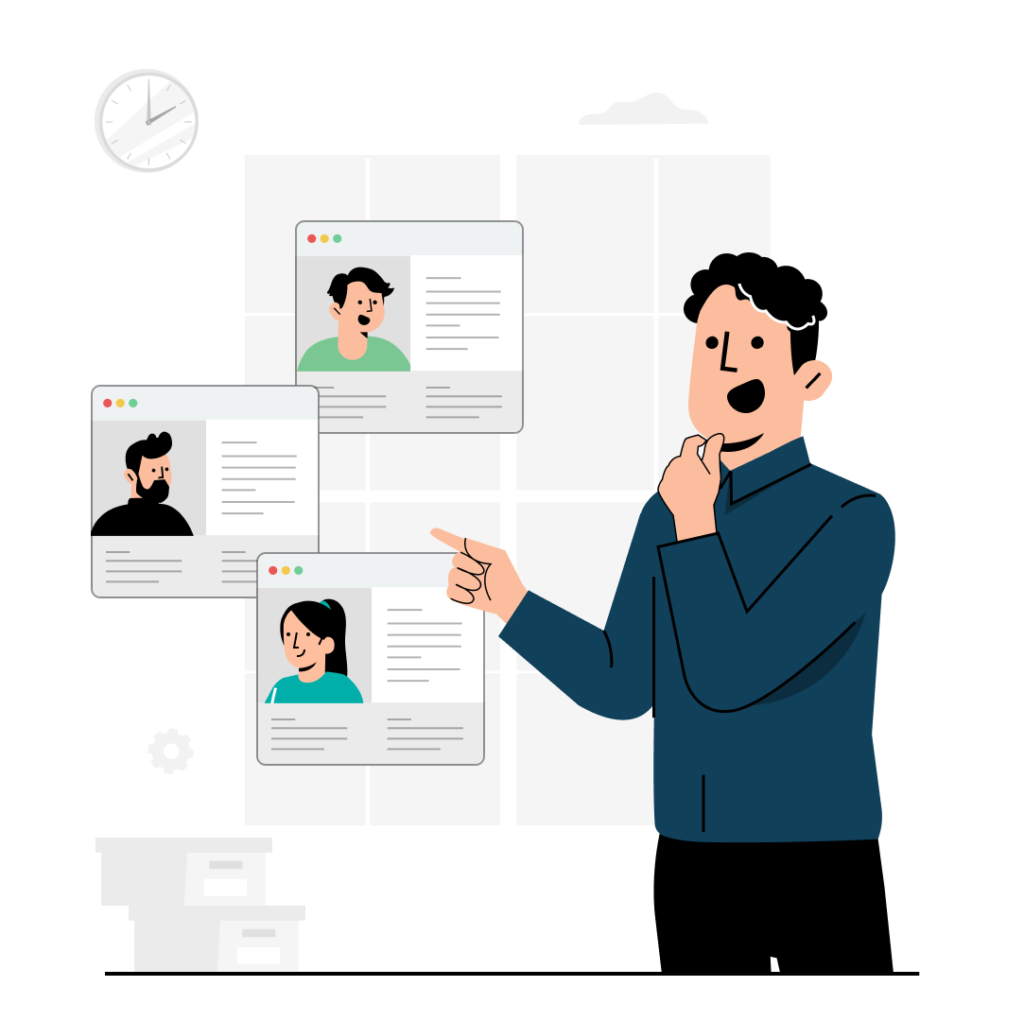You wake up to an email from your AWS account manager. They’re expanding into your product category. New features rolling out next quarter that do exactly what your SaaS does.
This is platform envelopment in action. The platform you build on bundles features that make your business redundant. It’s not new. This exact pattern destroyed Netscape and reshaped the browser market twice. Understanding these strategic dynamics through game theory helps you recognise when you’re vulnerable and what defensive options actually exist.
The browser wars are a textbook case study in how platform envelopment works, what the warning signs look like, and what defence options actually exist. Microsoft‘s bundling strategy wiped out Netscape. Google‘s counter-attack wiped out Microsoft’s dominance. These battles show you the patterns you’ll face when you’re deciding whether to build on a platform or compete with it.
What is platform envelopment and how does it differ from normal competition?
Platform envelopment is when a company uses its existing platform to break into an adjacent market by bundling. The platform owner gets to leverage shared user relationships and economies of scope. This is one of the key strategic patterns in platform competition that every CTO needs to understand.
The key is user base overlap. Microsoft bundled Internet Explorer with Windows because every Windows user needed a browser. Windows had 90%+ desktop OS share. The overlap was nearly complete.
In normal competition, products duke it out on merit. Platform envelopment gives you a distribution advantage through an existing platform. Users get “free” functionality through a platform they’re already using.
The platform owner subsidises the bundled product through platform revenue. This creates an asymmetric advantage. Netscape charged for Navigator. Microsoft made IE free. Netscape’s revenue model collapsed.
Markets with network effects often tip towards oligopoly or monopoly because popularity compounds. More users on the platform means bundling becomes more powerful.
How did Microsoft use platform envelopment to defeat Netscape Navigator?
In 1995 Netscape owned 72% browser market share. Their IPO valued the company at $2.9 billion. They were profitable, growing fast. They were winning.
Microsoft’s insight was dead simple. Every Windows user needed a browser. Bundle IE into Windows. Make it free.
The execution happened fast. IE 3.0 in 1996 caught up technically. IE 4.0 in 1997 got integrated right into the Windows shell. The browser became part of the operating system itself. Windows integration gave them advantages way beyond just bundling.
Netscape couldn’t charge when Microsoft offered a free alternative that came pre-installed on every PC. Market share eroded from 72% in 1997 to IE hitting 96% by 2002.
Then the network effects flipped. Developers optimised for IE because users switched. More users switched because developers built for IE. The feedback loop reinforced dominance.
Netscape sold to AOL in 1998. Their browser business was effectively dead by 2002. The DOJ filed antitrust suits but moved way too slowly. By the time remedies showed up the damage was already done.
Netscape had no platform to bundle with. They were competing on quality against bundling economics. Microsoft won because the world became locked in. Windows was copyrighted and couldn’t be replicated.
What is the “embrace, extend, and extinguish” strategy and why does it work?
This three-phase strategy destroys competitors while looking like you’re being cooperative.
In the embrace phase, the platform adopts competing or open standards to gain compatibility and legitimacy.
In the extend phase, the platform adds proprietary extensions that work better on its own platform but break interoperability. This creates value while building lock-in.
In the extinguish phase, the platform uses market dominance to make the proprietary version the de facto standard, pushing out competitors who can’t match the extensions.
Microsoft executed this with browsers. They embraced HTML, CSS, and JavaScript standards. Then extended with ActiveX, VBScript, and DirectX that only worked on Windows. Finally extinguished through bundling.
The strategy works because it looks cooperative at the start. Competitors welcome the embrace as validation. They don’t see the threat coming until the extend phase, when it’s too late to reposition.
Developers built for IE-specific features. Switching costs went up. Network effects accelerated dominance.
Cloud vendors are doing this today. They embrace open-source projects. Then extend with managed services that include proprietary features. Then use their market position to make their version the default.
How did Google Chrome envelop Internet Explorer despite Microsoft’s dominance?
By the mid-2000s IE had 60-95% market share. Windows still dominated. Microsoft looked unbeatable.
But Google had different platform advantages. Search dominance at 90%+. A growing advertising ecosystem. Android launching in 2008. Multiple platforms to bundle with.
Chrome launched in 2008 at 0%. Google’s bundling deployed across multiple fronts. Pre-installation on Android. Promotion on Google search. Payments to Apple for iOS default placement.
Technical superiority mattered too. V8 JavaScript was faster. Web standards support was better. Interface was cleaner. Chrome needed to retain users, not just acquire them.
Ecosystem integration reinforced the advantage. Chrome sync across devices. Google Workspace integration. Extensions marketplace. The more data Google collected, the better equipped they were to release products.
Chrome reached majority share by 2016. Now sits at 66-72%. Market dominance in eight years.
Chrome is free but drives users to Google search and ads. Default search economics create $20 billion+ annual value. Chrome makes other parts of Google’s business more valuable.
Google succeeded where Netscape failed because Google had platforms. Search, advertising, Android, and YouTube created bundling opportunities on par with Windows. No company had grown so dominant so quickly. They used that dominance to envelop IE.
Developers optimised for Chrome as users switched. The same feedback loop that built IE’s monopoly now built Chrome’s dominance.
When should you build on an existing platform vs compete with it?
The historical patterns here show you decision points you’ll face when you’re evaluating platform relationships. Applying a game theory framework to these strategic decisions helps you move beyond intuition to systematic analysis.
Build on a platform when your product complements rather than substitutes platform features. When the platform benefits from your success. When you can differentiate beyond the platform’s core offering.
Avoid platforms when user base overlap is high. When the platform could easily bundle your functionality. When your product sits in their expansion path.
71% of companies standardise on one cloud provider. That’s significant dependency. Lock-in emerges because applications use proprietary services unique to one provider.
Compete when you have alternative distribution channels. When you can defend through specialisation or proprietary data. When exit barriers are manageable.
Cooperate strategically when the threat is distant. When partnership provides growth you can’t achieve alone. When you’re building defensible moats during the cooperation period.
Assess three factors for risk. Does your category threaten the platform’s revenue model? Does the platform have an envelopment track record? What are your switching costs if the relationship sours?
Here’s the framework: user base overlap times bundling capability times strategic alignment. High on all three equals high risk.
Time horizon matters. Cooperation may work short-term while you’re building independence. But exporting data to switch providers can get complex, with some loss of functionality common, and your users become deeply familiar with specific tools, which means switching drops productivity. Build exit strategies early.
Watch for warning signs. Platform acquires competitors in your space. Platform launches beta features in your category. Platform changes terms favouring bundled offerings.
How can a smaller company defend against platform envelopment attacks?
When you’re facing platform envelopment threats, there are several defensive approaches that can work.
Specialise and segment. Focus on niches too small or complex for platforms to target profitably. Platforms optimise for mainstream markets. Vertical SaaS serving specific industries with deep workflow integration works well. Platforms won’t build industry-specific features for small markets.
Data differentiation builds moats. Develop proprietary datasets or models platforms can’t replicate. Platforms copy features but can’t copy years of domain-specific data.
Counter-envelopment requires complementary platform assets. You bundle offerings to create competing value. Requires platform scale though. Rarely viable for SMBs.
Pivot preemptively when threats emerge early. Shift to adjacent markets before your resources run out. Defences work best before platforms commit resources. Timing is everything.
Open-source can build community moats and prevent proprietary lock-in. Mozilla tried this with Firefox against IE. It worked partially but didn’t prevent Chrome’s dominance. Open-source prevents lock-in but doesn’t eliminate bundling advantages.
The SMB reality: counter-envelopment usually isn’t viable as it requires platform scale. Specialisation and pivoting are more accessible defences.
Failure modes to watch for: insufficient differentiation, platform subsidising competition, market too small to matter. Vendor lock-in acts as a barrier due to lack of standardisation.
Practical tactics: adopt open standards, use multi-vendor strategies, design modular systems, conduct regular vendor reviews.
Warning signs for pivoting: platform launches products in your category, platform acquires competitors, partnership term changes favouring bundled services.
What role do network effects play in platform envelopment success?
Products become more valuable as more users adopt them. Popularity compounds, tipping markets towards monopoly.
Platforms with network effects have larger user bases to bundle with. This creates stronger envelopment attacks.
Netscape had browser network effects. Developers optimised for the dominant browser. This became a weapon when IE gained share through bundling. The network effects that protected Netscape flipped to protect Microsoft.
Chrome’s success came from Google’s search and advertising network effects. Charlie Munger said of Google, “I’ve probably never seen such a wide moat.” That moat enabled Chrome’s growth.
IE peaked at 96% share. Chrome holds 72%. Network effects create concentration.
Network effects protect incumbents in normal competition but accelerate envelopment when platforms bundle. The mechanism that builds monopolies destroys them when larger platforms attack.
Envelopment attacks succeed fastest when network effects flip from defender to attacker. Tipping points matter. MySpace monetised before the market tipped while Facebook held off. Facebook reaped the rewards by waiting.
Multi-sided platforms have compounding advantages. Browser platforms connect users and developers. Cloud platforms connect providers and customers. Markets with network effects have multiple potential outcomes determined by expectations which become self-fulfilling.
Defence requires network effects platforms can’t replicate. Unique data, specialised communities, domain-specific ecosystems. Generic network effects won’t protect you.
FAQ Section
What early warning signs indicate my product is vulnerable to platform envelopment?
High user base overlap with platform users, platform expanding features adjacent to your category, platform acquiring competitors in your space, your functionality could be bundled with platform’s core offering, low switching costs for customers between your product and potential bundled alternative.
Can open-source software protect against platform envelopment?
Partial protection. Open-source prevents proprietary lock-in and builds community moats. Mozilla and Firefox demonstrate this. But it doesn’t eliminate bundling advantages. Chrome won despite Firefox being open-source. Works best combined with other defences like specialisation or data differentiation. Platforms can embrace open-source then extend with proprietary layers.
Why did antitrust action fail to save Netscape from Microsoft?
The regulatory process moved way too slowly. DOJ filed suit in 1998, years after IE bundling began. By then Netscape’s market position was already toast. Remedies focused on future behaviour rather than reversing the damage. Antitrust can constrain platforms but rarely rescues envelopment victims in time.
How did Chrome succeed where Netscape failed against Microsoft’s bundling?
Google had comparable platform assets to bundle Chrome with. Search, advertising, Android. Netscape had no platform. Chrome also launched when web standards improved, making browser competition about performance rather than proprietary features. Timing mattered too. Microsoft antitrust constraints limited IE bundling aggression during Chrome’s growth phase.
Should I be concerned about AWS enveloping my product category?
Assess three factors. First, user base overlap. Are your customers AWS customers? Second, feature fit. Could your functionality be an AWS service? Third, strategic value to AWS. Is your category large enough for AWS to target? High overlap plus easy bundling plus strategic value equals high risk. Consider specialisation or alternative cloud strategy.
What’s the difference between platform envelopment and normal product bundling?
Platform envelopment leverages user relationships from one market to enter an adjacent market through bundling. Normal bundling combines products serving the same market. Platform envelopment exploits user base overlap between different markets. Microsoft bundled OS with browser, not multiple OS features together.
How can you recognise “embrace, extend, and extinguish” tactics in real-time?
Watch for platforms adopting open standards first. That’s embrace. Then adding proprietary features that work better on their platform. That’s extend. Then using market power to make the proprietary version dominant. That’s extinguish. Modern example: cloud vendors offering managed open-source services with proprietary extensions that create lock-in.
Is counter-envelopment a viable strategy for SMBs against larger platforms?
Rarely viable for SMBs. Requires comparable platform assets to bundle with. SMBs typically lack these. Chrome could counter-envelop IE because Google had search, ads, and Android platforms. SMBs are better served by specialisation, niche differentiation, or cooperation strategies that don’t require platform-scale resources.
What makes specialisation an effective defense against platform envelopment?
Platforms optimise for mainstream markets where scale economics work. Specialised niches are often too small, complex, or regulatory-constrained for platforms to target profitably. Vertical SaaS serving specific industries with deep workflow integration is a good example. Platforms won’t build industry-specific features for small addressable markets.
How should you evaluate platform dependency risk when choosing cloud vendors?
Assess which vendor services are commodities versus differentiated. Review vendor’s history of enveloping partner categories. Evaluate your product’s strategic alignment or conflict with vendor roadmap. Calculate exit costs if vendor becomes competitor. Determine multi-cloud feasibility for dependencies. Balance convenience against long-term strategic risk.
Can network effects protect against platform envelopment or do they make it worse?
Network effects work both ways. They protect incumbents in normal competition but accelerate envelopment when platforms bundle. Netscape had browser network effects but Microsoft’s Windows network effects were larger. Defence requires network effects in dimensions platforms can’t replicate. Unique data, community, or specialised ecosystem.
What lessons from browser wars apply to current AI platform competition?
Same patterns emerging. Large platforms like OpenAI, Google, Anthropic, and Microsoft bundle AI capabilities into existing products. Embrace-extend-extinguish tactics with open-source models. Platform envelopment as AI features integrate into operating systems and cloud services. You face similar build-on versus compete decisions with AI platforms that predecessors faced with operating systems and browsers.
Platform envelopment is just one of many strategic patterns that shape technology decisions. For a complete overview of how game theory applies to technical leadership—from vendor negotiations to hiring decisions to technical debt management—see our comprehensive guide to game theory for technical leadership.












